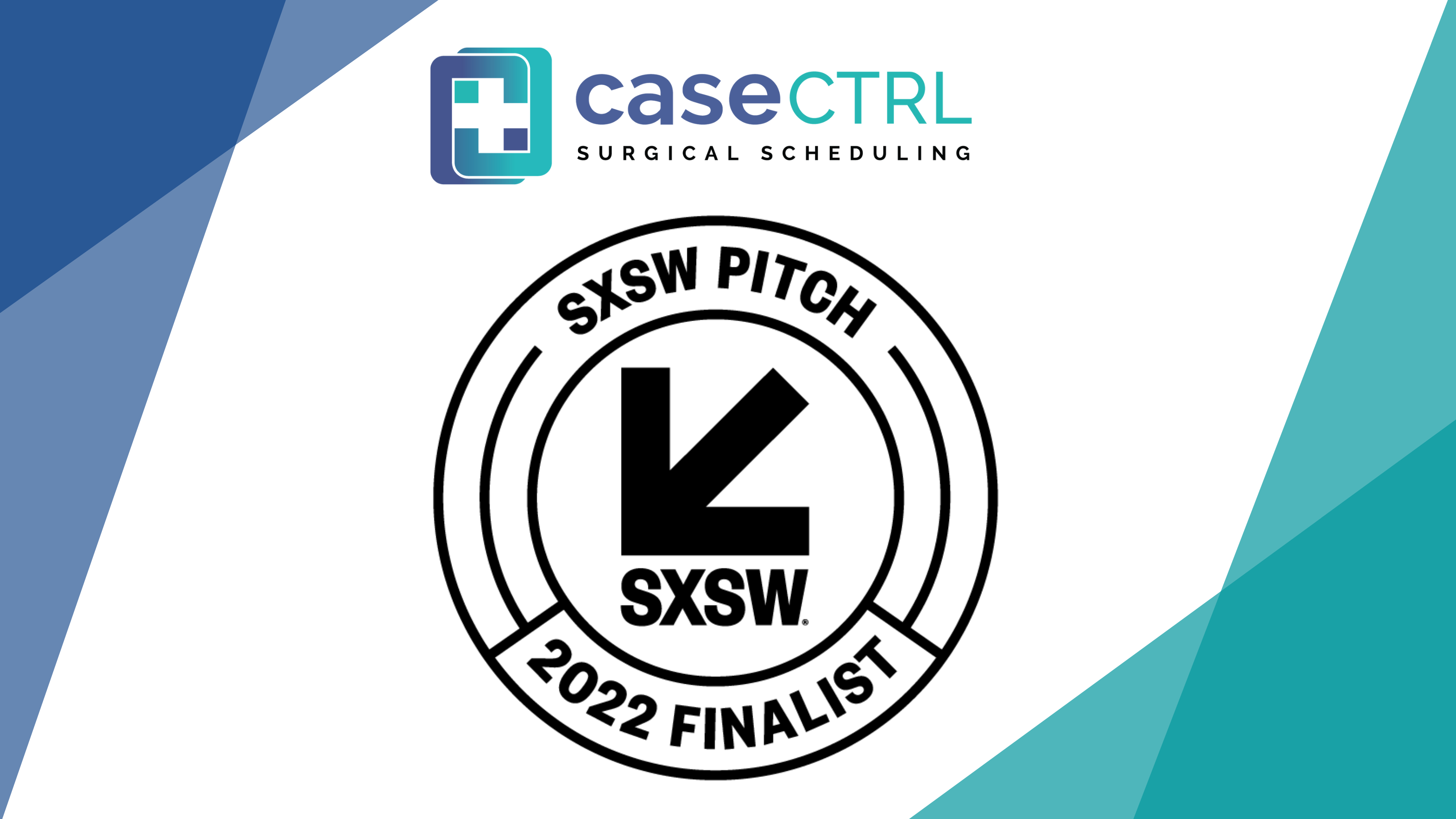If you’re not worried about losing a valued scheduler, you should be. Less than half of surgery schedulers (48%) last more than two years in their position. For more insights on the ideal time to use surgical scheduling software, and tips to ensure the best ROI, check out this guide.
Even during the best of times, retention can be a challenge. The job of a surgery scheduler in ambulatory surgery centers (ASCs) and hospitals is a demanding one, with a huge range of interconnected tasks and responsibilities. A typical day can involve managing schedules, communicating surgeon preferences, reserving equipment, registering patients, verifying pre-surgical clearance, fielding patient inquiries and much more. With so much responsibility resting on one person’s shoulders, it’s not surprising that burnout among these staff is common.
When a surgical scheduler suddenly needs time away, or worse, hands in their notice, it can leave the business reeling for a bit, as the practice must take on the costs of not only finding a fast replacement but also managing lost productivity while getting someone new up to speed.
6 Ways to Protect Your Surgical Scheduler—and Revenue
Given this dynamic, it’s important for hospitals and ASCs to support their surgical schedulers both to prevent burnout and reduce turnover. Several key workflow actions and automations in particular are vital to reducing stress on staff, preserving business continuity and improving overall scheduling efficiency.
1. Cross-Train Your Team
Too often, the burden of surgery scheduling falls on one person and their unique knowledge of how surgery scheduling processes run. When medical practices over-rely on one person’s skills and intuitional knowledge, it not only puts undue strain on that person but also creates a situation where daily functions of the practice suffer in the event of an unplanned absence.
Training a wider pool of staff to handle surgery scheduling creates a safety net and provides means to allow some flex in the scheduler’s day. Flexibility at work has been shown to improve job satisfaction and reduce attrition.
Having an automated, intuitive and transparent system with standardized scheduling workflows flexible enough to accommodate the nuances of several different surgeon workflows can make cross-training easier, lessen burden on new schedulers and ensure greater consistency of process.
2. Centralize Surgery Scheduling Document Management
Also key is streamlining document management. A centralized, HIPAA-compliant repository is important for improving access to and tracking progress of consents, referrals, durable medical equipment requests and insurance prior authorization forms. Having the relevant information clear and readily available to those who need it in real-time not only improves efficiency but also minimizes information gaps that can lead to unnecessary back and forth with the scheduler.
3. Improve Processes Around Procedural Descriptions and Preferences
One area that can be particularly vulnerable when a scheduler leaves is knowledge around a surgeon’s preferences. Throughout the scheduling process, many surgeons record, update, and append documentation with handwritten notes that the scheduler must decipher. Managing the procedural description and preference notations can be a real minefield for error, omission and inaccuracy, particularly when a surgeon and scheduler are new to working together.
By using scheduling software with systematic and standardized procedural descriptions and updated, accessible surgical preference cards, surgeons can enter data much more easily, and at the same time reduce the burden on the scheduler to have to understand handwritten notes. Communications captured in software makes preferences clear, consistent and easy to retrieve. Furthermore, surgery scheduling software, such as CaseCTRL, can use machine learning to capture a surgeon’s preferences such that it reduces the burden on surgeon and scheduler to catalogue rules and circumstances that necessitate unique surgeon requests or preferences.
Eliminating this guesswork makes it easier for new schedulers to get up to speed, means better use of the surgeon’s time, supports predictable care and reduces likelihood of miscommunication that can lead to errors. Software with tools that eliminate dependency on a singular scheduler enhance business continuity. Surgery schedulers stress that an oversight or miscommunication could frustrate a surgeon or other team member, delay a procedure, or even impact safety. Having this information easily stored for recall instills a much greater level of confidence in meeting physicians’ preferences and the accuracy of the surgery scheduling process.
4. Make Use of Progress Tracking and Alerts
With as many as 150 data points required for one patient’s surgery, mapping out all of the information and ensuring completion is a challenge for even an experienced scheduler. It can be difficult to keep track of and manage all the communications that go into scheduling just one surgery, let alone dozens of others. More often than not, schedulers are so overwhelmed that they are only satisfying the bare minimum needed to get a surgery scheduled. Inevitably customer service may take a hit, or incomplete information gets communicated to stakeholders, which ultimately breeds inefficiencies or distaste with the process. Forget about the scheduler having the bandwidth to effectively nurture undecided surgical candidates.
Real-time surgery scheduling progress tracking with built-in alerts to workflows, such as reminders for equipment reservations or automatic notifications to vendors and patients, can help schedulers stay on track, prioritize efforts and conduct more agile decision making as schedule availability and other dynamics change.
5. Reduce Manual Repetition
Often a scheduler’s time is taken up with administrative tasks that are repetitive, such as entering the same patient data on multiple forms or making similar calls to alert clinicians of document needs or responding to patients’ frequently asked questions. Practices should look for opportunities to simplify and automate repetitive or predictable processes wherever possible, recognizing that a scheduler’s time is better focus on areas of greatest impact to care quality and business profitability.
Tools such as CaseCTRL’s surgery scheduling software make it easy to implement digital forms with autofill options that complete data entry, saving time and reducing likelihood for error. Routine, case-specific communications of reminders or document needs also can be automated. In addition, AI-enabled Virtual Patient Guides can proactively head off many patient concerns by providing personalized information to help best prepare them in advance of their procedure without taxing the overworked surgery scheduling staff.
Schedulers can even automate text, email and phone reminders to patients and track receipts of that information. If patients aren’t responsive, then they can be flagged in the schedule for follow-up. The result? Time savings for the scheduler and less likelihood of patient no-shows.
6. Create a Retention Culture
The most important thing to retain your surgical scheduler is to let them know that they are valued and appreciated. Providing tools that simplify their job is just one strategy. Building a supportive working culture amounts to more than having the back-up staff and workflows in place to take the pressure off them. It’s about the human factor.
Communicate with staff regularly about key achievements. Encourage patients and service users to rate and comment on their experience, and make sure to celebrate the positive comments received. Provide staff with opportunities to develop their skills and career interests and enable them to see a progression path ahead. Reward effective scheduler performance with administrator dashboards in CaseCTRL that make it easy to identify high-performing teams. Opaque, off-line scheduling processes performed outside the electronic medical record or in multiple systems are impossible to measure or improve.
Stress is a normal, if unpleasant, part of any job, but it’s often short-term and temporary. However, in healthcare, there’s a real danger that a sustained level of stress can become overwhelming and lead to burnout. The impact on the individual can be damaging, but no less so on the practice as a whole. Patient satisfaction, physician satisfaction and the business’s profitability and longevity all depend on having—and retaining—the right staff. Take the time to look at where the stress points for your scheduler can be eased with practical changes and technology support, so you can best position the practice for long-term success. At CaseCTRL, we are experts in crafting transparent and accountable surgery scheduling processes that surgery schedulers love! Contact us for a free consultation and review of your team’s processes at info@CaseCTRL.com.







































